
Roots
The whisper of hair, its texture, its very presence, carries stories far older than our own. It is a language spoken through coils, waves, and strands, a silent testament to lineage and earth-bound wisdom. For those whose hair dances with texture, the outermost layer, the cuticle, holds a particular significance.
It is the hair’s protective shield, a guardian of inner vitality, yet it also presents unique challenges. Understanding this layer is akin to understanding the soil from which a cherished plant grows; it is foundational to nurturing its strength and allowing its inherent beauty to shine.
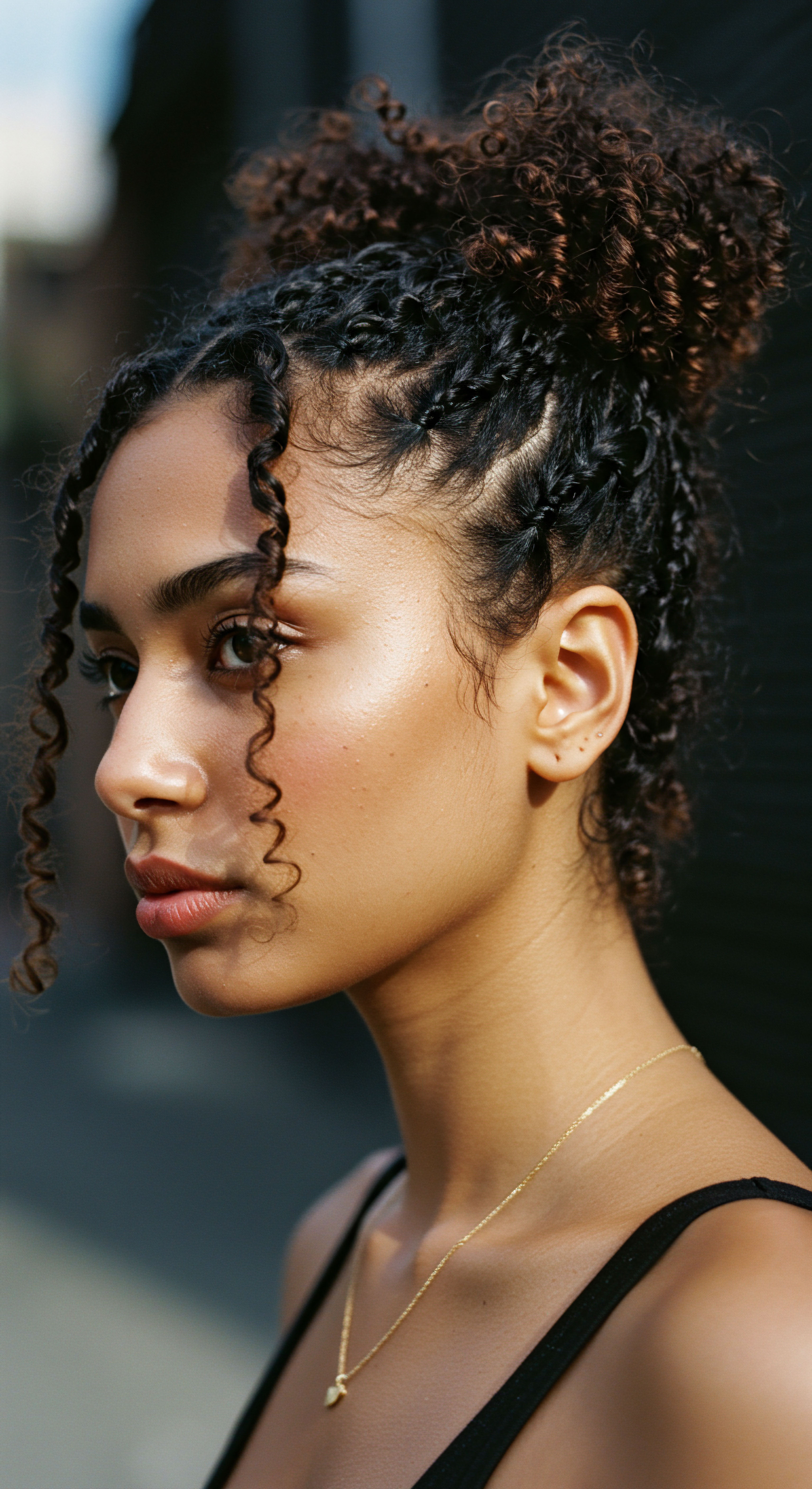
The Architecture of a Textured Hair Strand
Each individual hair strand, a slender column of keratinized cells, possesses a remarkable structure. At its core lies the medulla, often absent in finer hair types. Surrounding this is the cortex, the primary mass responsible for hair’s strength and elasticity.
Cloaking these inner layers is the Cuticle, a series of overlapping, flattened cells, much like shingles on a roof. These scales generally lie flat, oriented from root to tip, creating a smooth surface that reflects light and seals moisture within.
For textured hair, however, this architectural design takes on a distinctive character. The very helical shape of curly and coily strands means the cuticle scales do not always lie as flat as they might on straight hair. Instead, they can be naturally raised at various points along the strand’s curvature.
This inherent lift creates tiny, almost imperceptible openings, pathways for moisture to escape and external elements to enter. This structural difference means textured hair, by its very nature, begins with a predisposition to dryness and vulnerability.

Why is the Cuticle Different in Textured Hair?
The elliptical cross-section and the unique retro-curvature of the hair follicle, characteristic of Afro-textured hair, contribute to its distinct coiled structure. This shape inherently creates points of stress along the hair shaft where the cuticle layers are less uniformly aligned. Studies utilizing scanning electron microscopy (SEM) have shown that the cuticle scales on textured hair can be more prone to lifting and abrasion due to the constant bending and twisting of the strand. This morphological reality sets the stage for a series of challenges.
The inherent structure of textured hair means its cuticle scales do not always lie flat, creating pathways for moisture loss and increased vulnerability.

Hair Porosity and Cuticle Behavior
The concept of Hair Porosity directly relates to the cuticle’s condition. Porosity describes the hair’s ability to absorb and retain moisture.
- Low Porosity hair has tightly closed cuticle scales, making it resistant to water and product penetration. Products may sit on the surface.
- Medium Porosity hair possesses a balanced cuticle layer, allowing for good absorption and retention of moisture.
- High Porosity hair features open or raised cuticle scales, absorbing moisture readily but losing it just as quickly. This often results from damage, but for textured hair, a degree of higher porosity can be an inherent characteristic due to its structural form.
For many with textured hair, particularly those with tighter curl patterns, a tendency towards high porosity is a common experience. The naturally lifted cuticle scales, a consequence of the hair’s unique curvature, allow moisture to enter the hair shaft with relative ease. Yet, the very same openness means that moisture departs just as swiftly, leading to a constant struggle with dryness. This constant moisture fluctuation can further compromise the cuticle’s integrity over time.
| Hair Type Straight |
| Cuticle Lay Generally flat and smooth |
| Moisture Retention High |
| Breakage Tendency Lower |
| Hair Type Wavy |
| Cuticle Lay Slightly raised at curves |
| Moisture Retention Moderate |
| Breakage Tendency Moderate |
| Hair Type Curly |
| Cuticle Lay More raised at curves |
| Moisture Retention Lower |
| Breakage Tendency Higher |
| Hair Type Coily |
| Cuticle Lay Significantly raised, uneven |
| Moisture Retention Lowest |
| Breakage Tendency Highest |
| Hair Type Generalized observations; individual experiences may vary. |

Ritual
The daily rhythm of caring for textured hair is a conversation, a series of intentional gestures that speak to its distinct needs. We move from the foundational understanding of the cuticle to the lived experience of maintaining its delicate balance. The practices we adopt, the products we select, and the very philosophy guiding our approach are all shaped by the unique demands this outermost layer places upon us. This is where scientific insight meets ancestral wisdom, where knowledge transforms into the art of daily care.

Moisture Loss A Constant Challenge
One of the most persistent difficulties arising from the textured hair cuticle is its predisposition to moisture loss. The naturally raised cuticle scales, while beautiful in their contribution to curl definition, act as miniature escape routes for hydration. Sebum, the scalp’s natural oil, struggles to travel down the coiled shaft, leaving the lengths and ends of textured strands particularly vulnerable to dryness. This chronic dehydration leaves the hair feeling rough, looking dull, and significantly increasing its susceptibility to breakage.
Consider the simple act of air drying. For straight hair, the cuticle lays flat, sealing in moisture as it dries. For textured hair, the open cuticle allows water to evaporate quickly, often before the inner cortex has had a chance to fully hydrate. This leads to a phenomenon known as “hygral fatigue,” where the hair swells with water then rapidly loses it, repeatedly, weakening the cuticle over time.
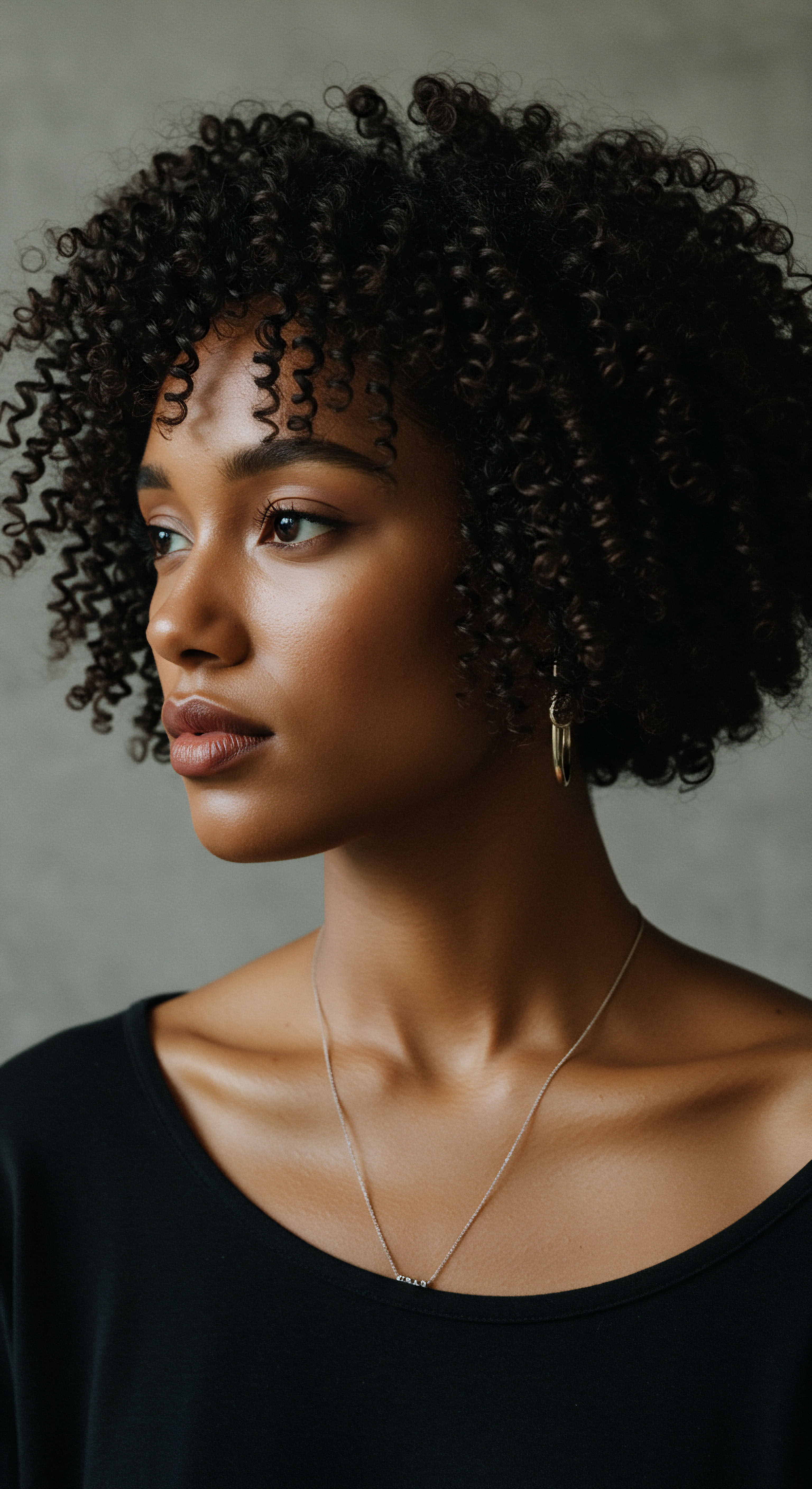
Combating Dryness Through Thoughtful Application
Addressing the inherent dryness of textured hair requires a strategic approach to product application. It means moving beyond mere surface conditioning to practices that truly support cuticle health and moisture retention.
- Layering products in a specific order, such as a leave-in conditioner followed by a cream and then an oil, can create a moisture seal. This technique, often called the “LOC” or “LCO” method, helps to compensate for the cuticle’s natural tendency to allow moisture to escape.
- Deep Conditioning treatments, especially those with heat, are vital. Warmth gently lifts the cuticle further, allowing moisturizing ingredients to penetrate the cortex before the cuticle reseals as the hair cools.
- Water-Based products are generally preferred for textured hair to ensure proper hydration before sealing. Heavy, oil-based products applied to dry hair may only coat the surface, leading to buildup without addressing the underlying moisture deficit.
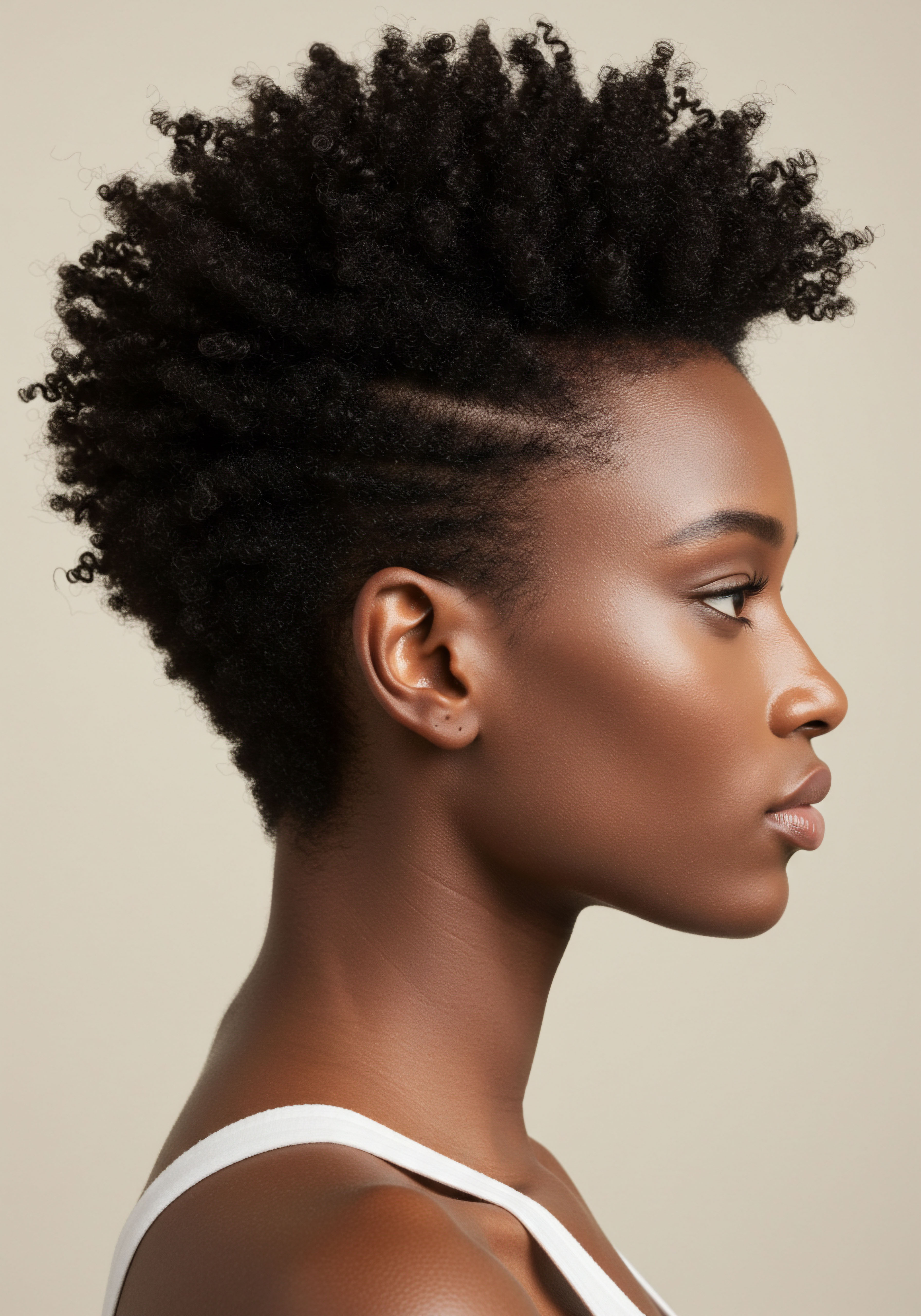
The Vulnerability to Mechanical Stress
The structural characteristics of textured hair, particularly its coiled shape and the way its cuticle scales lie, make it inherently more delicate and prone to mechanical damage. Each twist and turn in a coil represents a potential stress point. When combing or detangling, these points experience increased friction and tension, which can lift, chip, or even remove cuticle scales.
A study on African hair samples found that they exhibited lower resistance to mechanical wear compared to Asian and Caucasian hair, often showing higher deposition of keratin material during friction tests, indicating increased damage. This susceptibility means that seemingly simple actions, if not performed with care, can lead to significant cuticle damage, exposing the cortex and leading to breakage.
Daily interactions, from detangling to styling, can compromise the textured hair cuticle, necessitating a gentle hand.
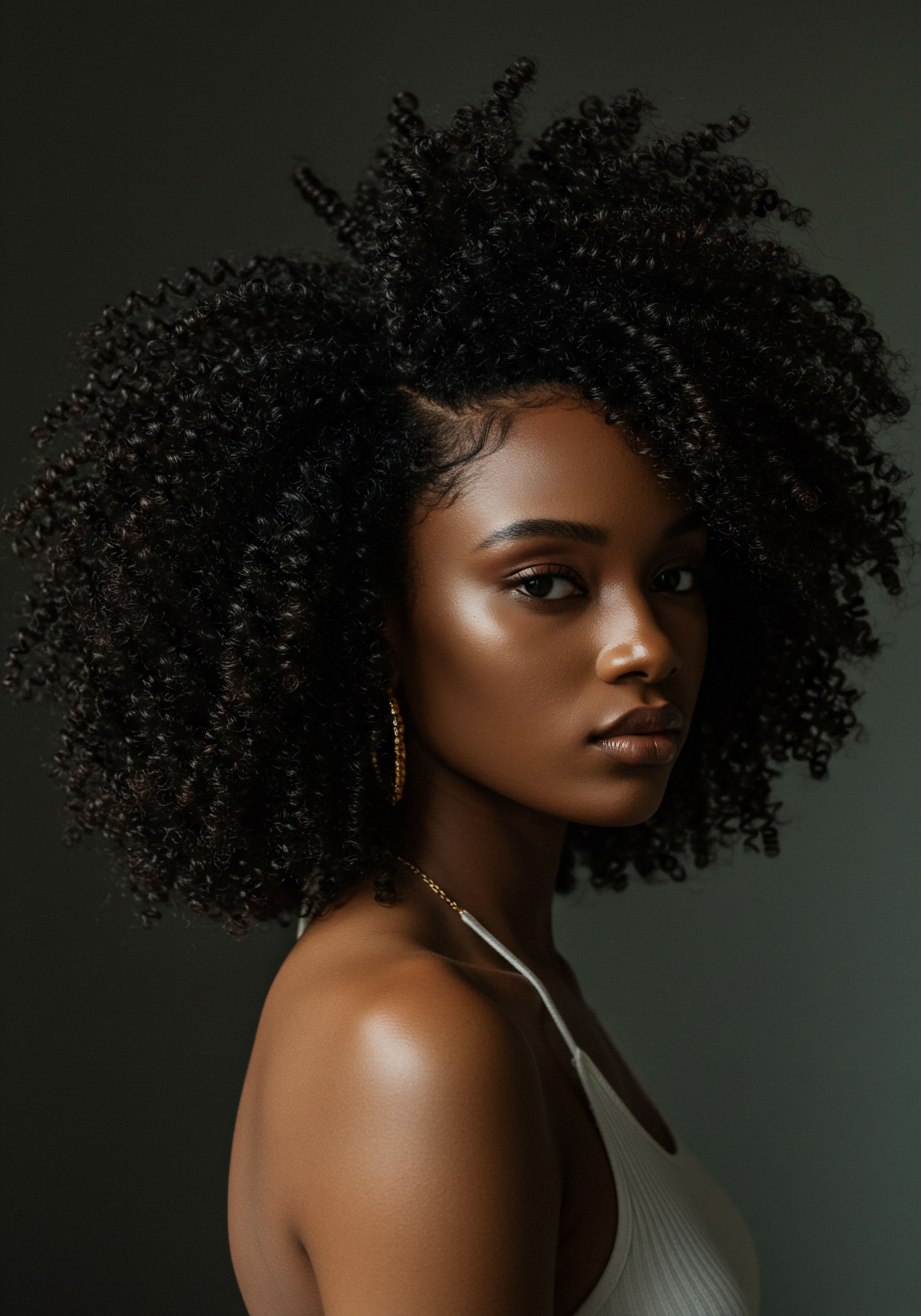
Styling and Cuticle Integrity
Styling textured hair, a practice deeply rooted in personal expression and cultural identity, also presents its own set of challenges for cuticle integrity.
Consider the act of detangling. The natural tendency of textured strands to intertwine and form single-strand knots means that detangling, if rushed or done without sufficient lubrication, can be a primary source of cuticle abrasion and subsequent breakage. The goal is to separate strands with minimal friction, allowing the cuticle to remain as smooth as possible.
Similarly, the use of heat for styling, while offering versatility, poses a considerable threat. High temperatures can cause the cuticle scales to lift and even crack, leading to irreversible damage. Chemical treatments, such as relaxers or permanent color, also significantly alter the cuticle, sometimes removing the protective lipid layer (18-methyl eicosanoic acid) that helps prevent water penetration and maintaining structural integrity.
A careful approach to styling, prioritizing methods that minimize friction and excessive heat, becomes a ritual of preservation for the cuticle. This often means embracing protective styles, air drying, or using low-heat settings with appropriate heat protectants.

Relay
As we move beyond the immediate challenges and daily rituals, a deeper contemplation of the textured hair cuticle unveils layers of complexity, extending into the realms of science, cultural understanding, and the very perception of beauty. The conversation surrounding this outermost layer is not merely about its physical state; it is about how its unique characteristics shape our hair journeys, influence product innovation, and intersect with broader societal narratives.

The Biochemical Vulnerability of the Cuticle
Beyond the physical morphology, the biochemical composition of the textured hair cuticle plays a significant role in its susceptibility to damage. The cuticle, composed primarily of keratin proteins, lipids, and polysaccharides, relies on a delicate balance of these components for its protective function. The outermost layer of cuticle cells, the Epicuticle, is a hydrophobic layer, serving as the first line of defense against water and external aggressors. Below this lies the A-layer, rich in cysteine, whose disulfide bonds provide strength and rigidity.
Research indicates that while Afro-textured hair may have a higher overall lipid content, its structure, with increased curvature and uneven cuticle thickness, can still lead to dryness and moisture loss. This paradox suggests that the distribution and arrangement of these lipids, rather than just their quantity, might be a critical factor in how effectively the cuticle performs its barrier function. When these lipid layers are compromised, whether through mechanical stress, chemical treatments, or environmental exposure, the cuticle’s ability to regulate moisture and protect the cortex is severely diminished.

Does Hair Texture Influence Cuticle Lipid Distribution?
The question of how hair texture influences the distribution of lipids within the cuticle is a compelling area of ongoing research. While the exact causal links are still being thoroughly investigated, observations suggest a correlation. The coiled nature of textured hair may create uneven wear patterns on the cuticle surface, potentially disrupting the uniform spread of lipids and leaving certain areas more exposed. This could contribute to the observed lower moisture retention despite higher overall lipid content in some textured hair types.
Consider the microscopic studies that have revealed the presence of ‘cracks’ in the cell membrane complex between cortical cells, or between the cuticle and the cortex, in dry Afro-textured hair subjected to mechanical stress. These micro-fractures indicate a compromised barrier, allowing for accelerated moisture escape and increasing the hair’s fragility. The integrity of the cuticle’s lipid barrier is therefore not just about quantity, but also about its sustained presence and uniformity along the entire, curvilinear length of the strand.

The Interplay of Culture and Cuticle Health
Hair care practices, deeply embedded in cultural beliefs and traditions, significantly interact with the inherent challenges presented by the textured hair cuticle. Throughout history, communities with textured hair have developed intricate styling methods, often passed down through generations, which carry both aesthetic and protective significance. Yet, some traditional practices, when combined with modern chemical treatments or aggressive styling, can inadvertently exacerbate cuticle damage.
For instance, the historical use of heat and chemical straighteners, driven by societal beauty norms that often favored straighter hair, has a profound impact on the cuticle. These processes chemically alter the disulfide bonds within the hair, weakening the cuticle and making it more porous and susceptible to damage. This highlights a complex relationship where cultural practices, often intended for beauty or manageability, can sometimes conflict with the biological needs of the textured hair cuticle, leading to increased fragility and breakage.
Cultural practices and historical beauty standards often intersect with cuticle health, shaping care routines and influencing hair’s condition.
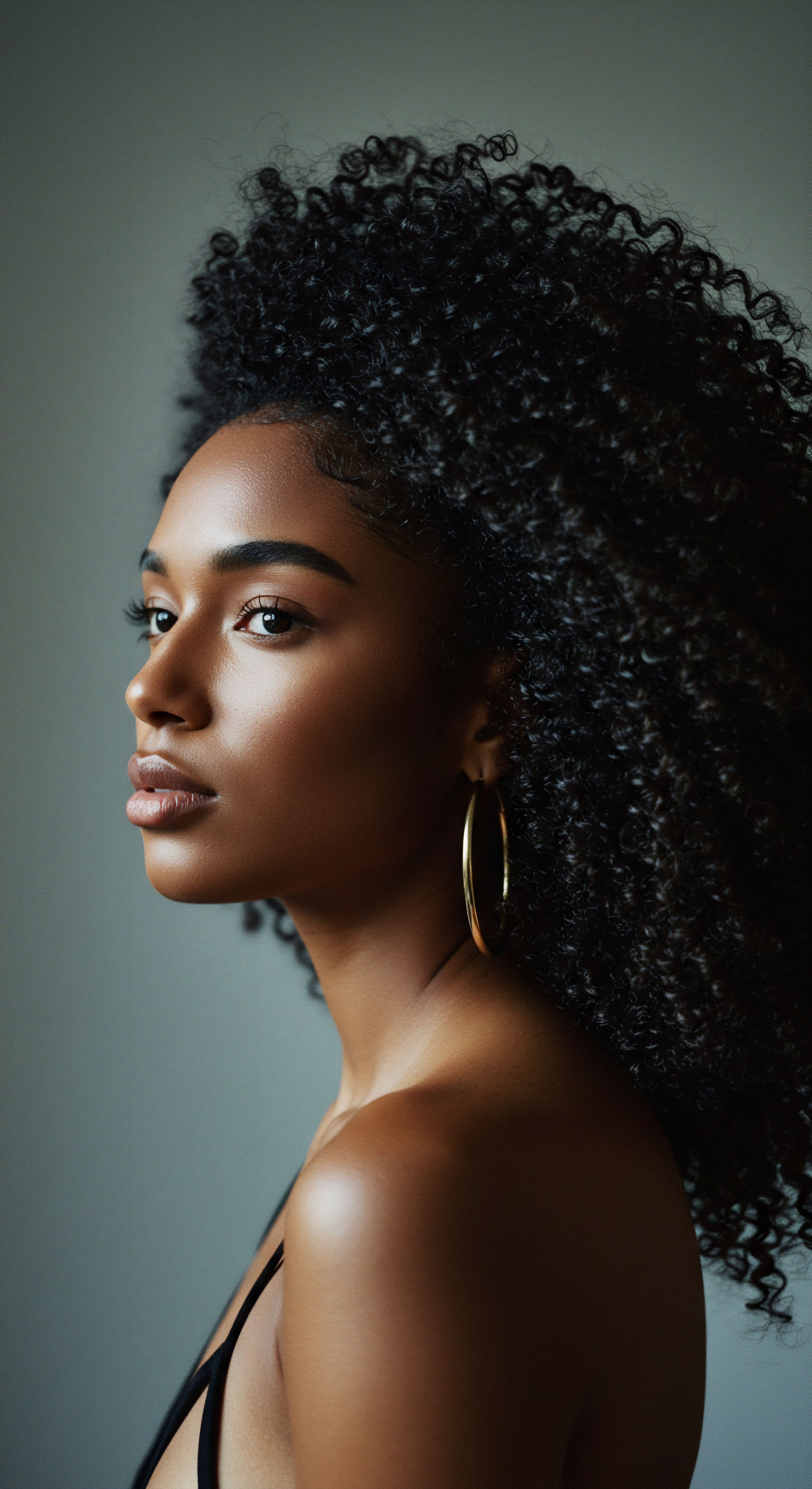
How Do Societal Perceptions Affect Cuticle Care Practices?
Societal perceptions of textured hair, influenced by centuries of colonial beauty standards, have historically led to practices that prioritize alteration over preservation. This has often meant treatments designed to straighten or relax coils, processes that inherently compromise the cuticle. The pressure to conform to certain aesthetic ideals can lead individuals to choose methods that, while achieving a desired look, may leave the cuticle severely weakened, making the hair more prone to dryness, frizz, and breakage.
A shift in cultural appreciation towards natural textured hair has begun to change this dynamic, fostering a greater emphasis on protective styles and gentle care. This movement encourages understanding and working with the hair’s natural cuticle structure rather than fighting against it. It promotes routines that nourish and seal the cuticle, celebrating the unique properties of textured hair. This cultural awakening allows for care practices that align more harmoniously with the hair’s biological needs, supporting the cuticle’s integrity and overall hair health.
| Factor Coiled Structure |
| Impact on Cuticle Naturally raised scales at curves |
| Resulting Challenge Increased moisture loss, dull appearance |
| Factor Mechanical Stress |
| Impact on Cuticle Abrasion from detangling, styling |
| Resulting Challenge Cuticle lifting, chipping, breakage |
| Factor Chemical Treatments |
| Impact on Cuticle Alteration of disulfide bonds, lipid removal |
| Resulting Challenge Increased porosity, brittleness, damage |
| Factor Heat Application |
| Impact on Cuticle Lifting and cracking of scales |
| Resulting Challenge Dryness, frizz, irreversible damage |
| Factor Environmental Exposure |
| Impact on Cuticle UV radiation, pollution |
| Resulting Challenge Increased porosity, weathering |
| Factor Understanding these factors informs targeted care. |
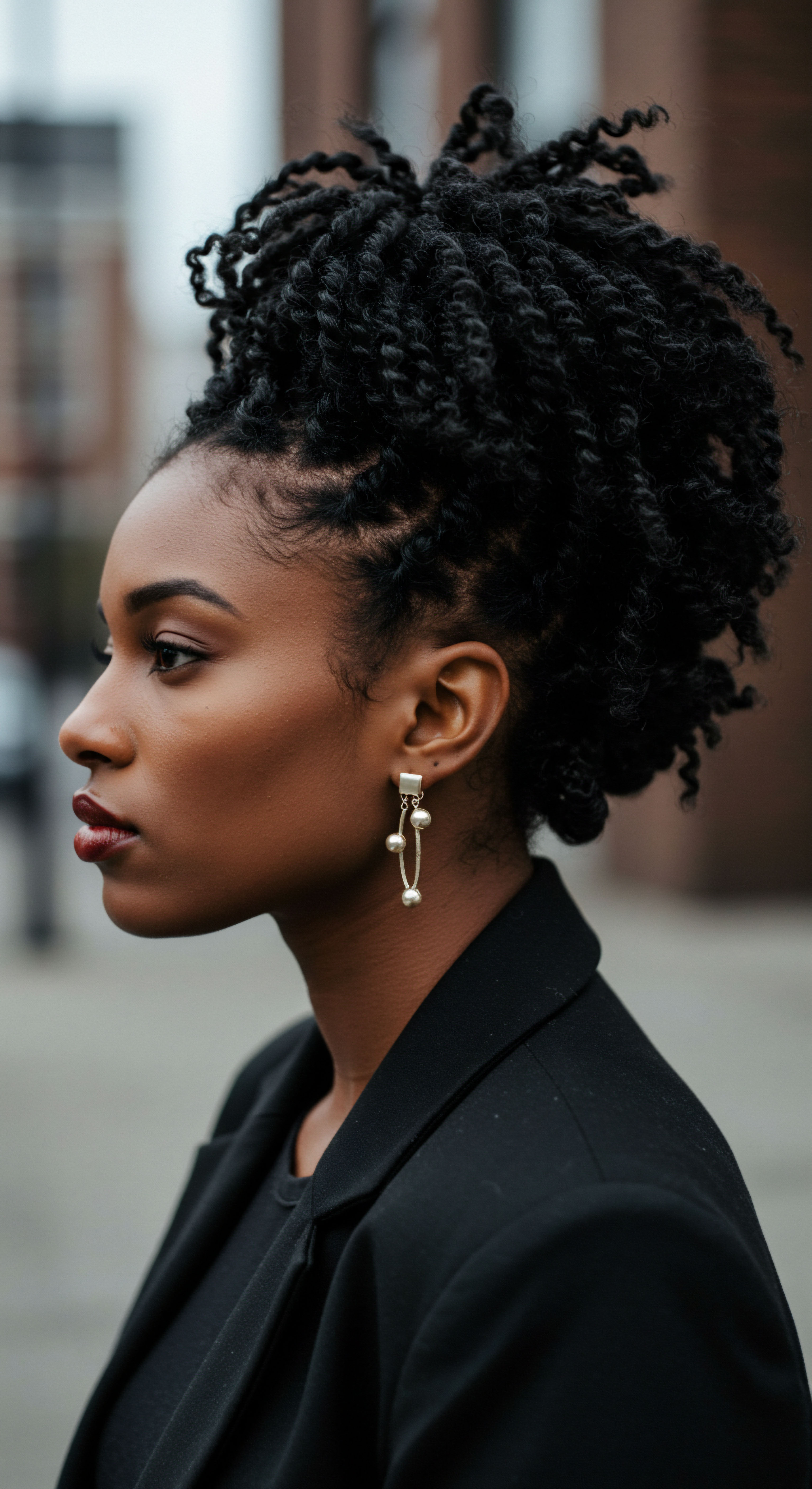
Reflection
The journey through the intricate world of the textured hair cuticle reveals a story of remarkable resilience and unique needs. It is a story woven with threads of biology, culture, and personal experience, each contributing to the rich tapestry of textured hair. To truly care for these strands is to honor their inherent structure, to move with intention, and to recognize that every coil and curve holds a history and a future. Our understanding of the cuticle, from its microscopic architecture to its profound influence on daily rituals, invites a deeper connection with our hair, fostering a relationship built on knowledge, respect, and celebration.

References
- Davis-Sivasothy, Audrey. The Science of Black Hair ❉ A Comprehensive Guide to Textured Hair Care. Saja Publishing, 2011.
- Robbins, Clarence R. Chemical and Physical Behavior of Human Hair. Springer, 2012.
- McMullen, Roger L. “Physicochemical Properties of Textured Hair.” Journal of Cosmetic Science, vol. 72, 2022, pp. 711-731.
- Gavazzoni Dias, Maria Fernanda. “Hair Cosmetics ❉ An Overview.” International Journal of Trichology, vol. 7, no. 1, 2015, pp. 2-15.
- Takahashi, Tsutomu. “A Highly Resistant Structure Between the Cuticle and the Cortex of Human Hair. II. CARB, a Penetration Barrier.” International Journal of Cosmetic Science, vol. 41, 2019, pp. 28-35.
- Khumalo, Ncoza D. et al. “Hair Breakage in Patients of African Descent ❉ Role of Dermoscopy.” Skin Appendage Disorders, vol. 1, no. 2, 2015, pp. 99-104.
- Takahashi, Tsutomu. “A Highly Resistant Structure Between the Cuticle and the Cortex of Human Hair. III. Characterization of the Structure CARB.” International Journal of Cosmetic Science, vol. 43, 2021, pp. 254-262.
- Hassan, Ambreen, et al. “Investigation of the Changes in the Hair Cuticle Due to Chemical Degradation.” Uttar Pradesh Journal of Zoology, vol. 45, no. 2, 2024, pp. 86-94.
- Malinauskyte, E. et al. “Penetration of Different Molecular Weight Hydrolysed Keratins into Hair Fibres and Their Effects on the Physical Properties of Textured Hair.” International Journal of Cosmetic Science, vol. 43, 2021, pp. 26-37.
- Byrd, Ayana, and Lori Tharps. Hair Story ❉ Untangling the Roots of Black Hair in America. St. Martin’s Press, 2001.